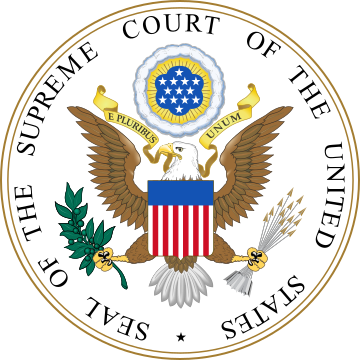Don Pesci: Democratic kooks consider court-packing
In “History’s Bad Ideas Are an Inspiration for Progressives,” historian and columnist Victor Davis Hanson examines the dark side of progressivism.
Stymied by a Supreme Court that was a bit too traditionalist for his tastes – that is to say, a high court that faithfully interpreted the laws with reference to a real rather than a fictitious “living Constitution” -- President Franklin Roosevelt, Hanson notes, tried in 1937 to pack the court. His “convoluted proposal would have allowed Roosevelt to select a new—and additional justice—to the Supreme Court for every sitting judge who had reached 70 years, 6 months, and had not retired. And in theory, he could pack on 6 more judges, creating a 15-member court with a progressive majority.”
The effort to compromise the independence of the court by packing it with progressive judges failed ignominiously, in large part because the media of the day were constitutionally literate. Since then, the American media have declined. With the help of half-mad French philosophers, the American media have been convinced that any institution not born yesterday is hopelessly recherché. Texts, including the solid propositions of our founding documents, are to be wretched from their contexts and reformulated to satisfy the revolutionary ambitions of fake philosophers and politicians.
Faced today with a president considerably more conservative than his predecessor, the kook wing of the Democratic Party once again is considering court-packing. Donald Trump has nominated two Supreme Court justices viewed by progressive extremists as intolerably conservative. In fact, Neil Gorsuch, who has been approved, and Brett Kavanaugh, awaiting approval, are constitutional originalists in the manner of the late Justice Antonin Scalia. Kavanaugh, Trump’s most recent nominee to the high court, is viewed by many court watchers as a libertarian in the manner of Justice Anthony Kennedy, whom he will replace on the bench. The libertarian Cato Institute perhaps put it best when it described Kennedy’s jurisprudence as “a constant struggle to balance freedom and responsibility—ordered liberty, if you will."
Noting that appointments in due course occasionally disappoint those who believe that justices selected by conservative or liberal presidents will continue to maintain a steady ideological path on the court, Hanson lists the three most noxious principles of progressive irredentism.
First, progressives believe that only conservative justices should flip, while liberal justices should maintain an inflexible progressive course. Second, any and all judicial means that advance progressive decisions, however much they violate man and nature’s God, must advance the public good. And lastly, progressives believe, with all the fervency of a doctrinaire extremist, that it is proper to view the court as an instrument of social justice, prodding representative bodies to the left by means of decisions that, strict constitutionalists would say, have only a nodding acquaintance with historical constitutional interpretation.
Hewing to this last principle, the progressive re-drafters of the constitution tip their hats to a Marxist formulation: “The philosophers have only interpreted the world, in various ways. The point, however, is to change it,” said Karl Marx, words engraved as an epitaph on his tombstone. In much the same way, modern progressives hold that it is the business of progressives on the left to change laws made by representative assemblies through a radical, ahistorical re-interpretation of a shape-shifting Constitution.
Among progressives, nullification has become the new normal. Revisiting this socially disruptive idea can only bring down fire upon our heads. Jefferson Davis and other Southern secessionists embraced nullification until they were persuaded by President Abraham Lincoln’s generals to give it up, but not before the grounds of Shiloh and Gettysburg were soaked in blood. The operative principle of nullification is that the governor of a state, its lawmakers, or its municipal executives may nullify – declare inoperative -- federal laws at will and expect the federal government to wink at governors and state legislators who counsel lawbreaking on occasion for purportedly good reasons. But consider that In an assembly of states that calls itself a union, the presence of a sanctuary city is an act of uncivil defiance bordering on insurrection.
Sanctuary state proponents such as Connecticut Gov. Dannel Malloy and U.S. Sen. Richard Blumenthal in Connecticut are perfectly willing to accede to the proposition that the federal government does have the authority to make and enforce laws. Indeed, if Blumenthal were to contest this proposition, his office -- that of U.S. senator, which is constitutionally authorized to write laws to be executed by the executive department – would be rendered useless. In supporting sanctuary cities, Blumenthal is setting his face against both the executive department and Congress of which he is a member. In effect, Blumenthal is saying that federal laws may be vacated by governors and mayors of the states if the law in question is perceived as unjust.
Once his principle of abrogation is generally accepted, any municipal executive with the concurrence of a governor may defy any law written by Blumenthal and affirmed by Congress. One needn’t wonder whether Blumenthal or Malloy would assert their destructive operative principle if a conservative state government were to defy what has been called “settled law” in Roe v Wade and outlaw all forms of abortion.
Don Pesci is a Vernon, Conn.-based columnist.
